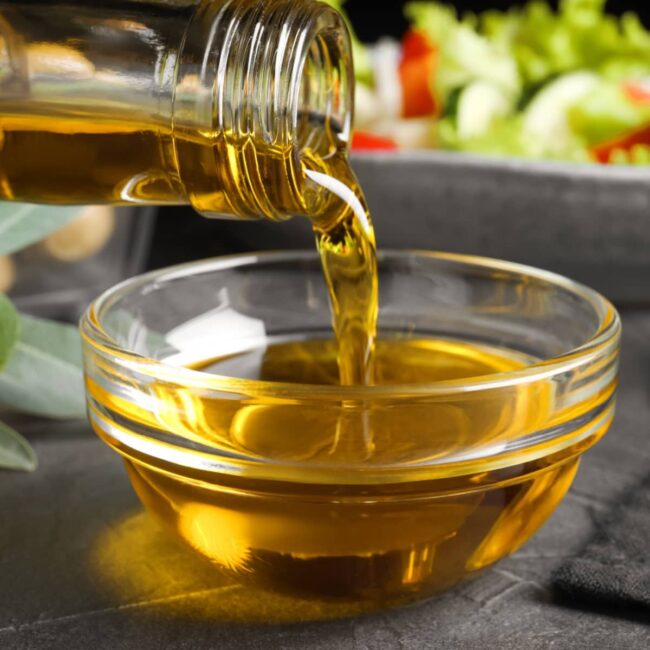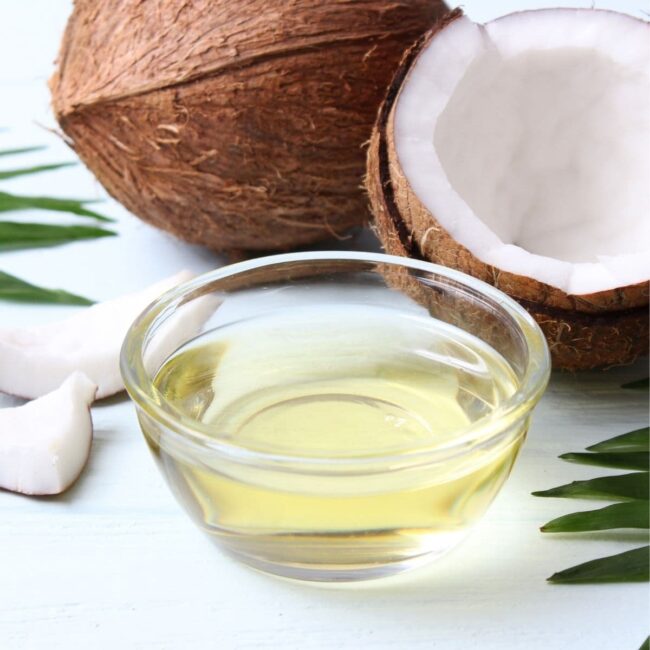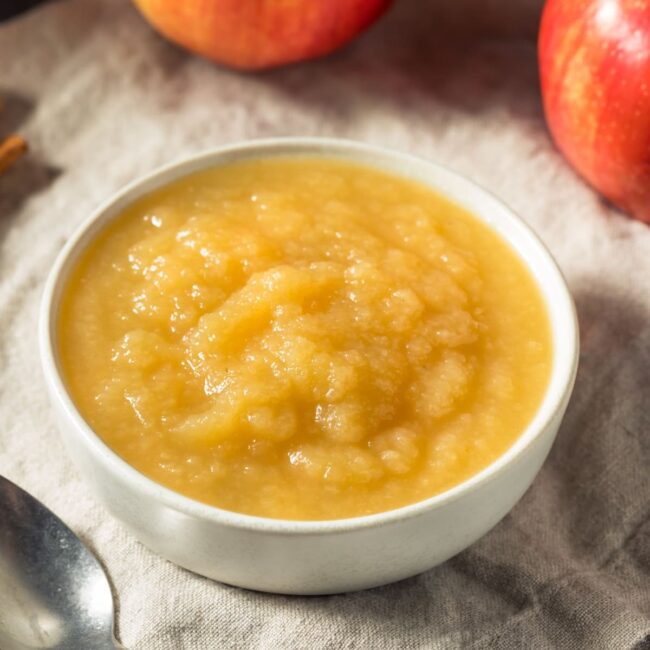8 Simple Canola Oil Substitutes for Cooking and Baking
The best substitutes for canola oil and how to use them depend on texture, flavor, and cooking method. Some alternatives maintain the same light consistency, while others bring a richer depth to dishes.
The right choice depends on whether it's for baking, frying, or dressing. A few options offer a neutral taste, while others contribute a hint of nuttiness or fruitiness.
Some substitutes work better at high temperatures, while others shine in cold applications. Here are 8 effective canola oil substitutes and the best ways to use them:
Why Choose Canola Oil?
Canola oil stands out in the kitchen for several reasons that enhance your cooking experience.
It’s an excellent choice when you want a subtle touch in baking or frying without overwhelming taste profiles.
Best Canola Oil Alternatives for Cooking
Running out of canola oil? These substitutes work for frying, baking, and dressings.
Vegetable Oil
Vegetable oil serves as an economical alternative to canola oil, making it a staple in many kitchens.
Known for its affordability, this versatile option often consists of a blend of oils, which may vary by brand.
While it maintains a similar neutral flavor and impressive smoke point comparable to canola oil, there are considerations regarding consistency due to its mixed nature.
Ideal for baking or stir-frying dishes where subtle flavors prevail, you might find yourself reaching for vegetable oil when you're looking to save on costs while still achieving great results in your cooking endeavors.
Olive Oil
Olive oil stands out as an exceptional alternative to canola oil, especially for sautéing and salad dressings. Known for its robust flavor profile, it enhances dishes while providing numerous health benefits.
While not the top pick for baking due to its stronger taste, olive oil's medium-high smoke point makes it versatile in various cooking methods. Although it may come with a higher price tag than some oils, it's increasingly accessible and commonly used in kitchens today.
Opting for olive oil allows you to enjoy both taste and nutrition in your culinary endeavors.
Sunflower Oil
Sunflower oil serves as an excellent alternative to canola oil, featuring a mild flavor and high smoke point. This versatile option works seamlessly in baking as well as both deep and shallow frying, making it ideal for various cooking methods.
With its abundance of polyunsaturated fats and vitamin E, sunflower oil not only enhances dishes but also contributes health benefits. You can easily swap sunflower oil with canola in any recipe without compromising taste or texture.
Its light profile allows your ingredients to shine through while providing the necessary fat content for successful cooking outcomes.
Safflower Oil
Safflower oil is an excellent alternative to canola oil, derived from the seeds of the safflower plant. With its high smoke point and mild flavor, it serves as a reliable option for various cooking methods.
Ideal for baking or pan frying, this oil allows your dishes to shine without overpowering their natural flavors. It seamlessly replaces canola in recipes on a one-to-one basis, making it convenient whenever you're low on pantry staples.
Safflower's versatility ensures that you maintain delicious outcomes while exploring healthier choices in your kitchen routine.
Peanut Oil
Peanut oil serves as an excellent alternative to canola oil, especially for frying. Renowned for its high smoke point, this oil adds a distinct nutty essence that enhances the flavor of stir-fried dishes.
While it brings unique taste and character to savory meals, using it in baked goods may not yield desirable results due to its strong profile. Caution is advised when cooking with peanut oil since some individuals might be allergic; it's wise to consider your audience before incorporating it into various recipes.
This option allows you to explore bold flavors while ensuring safety in meal preparation.
Avocado Oil
Avocado oil serves as a fantastic alternative to canola oil, particularly in baking applications. Extracted from the creamy flesh of avocados, this oil adds moisture and richness to cakes without overpowering other flavors.
While its taste is slightly more pronounced than that of canola, it remains milder compared to olive oil. The downside is that sourcing avocado oil might require some effort since it tends to be pricier and may only be available at specialty health food stores.
Utilizing avocado oil not only enhances your baked goods but also contributes beneficial nutrients you’ll appreciate in your cooking endeavors.
Coconut Oil
Coconut oil serves as an excellent alternative to canola oil, perfect for those looking to experiment in the kitchen. This versatile fat contributes moisture to baked goods while leaving no trace of coconut flavor, making it suitable for a wide range of recipes.
Keep in mind that its lower smoke point might pose challenges during high-heat cooking methods like sautéing; burning can occur if not monitored closely. In cooler environments, you may find yourself melting solidified coconut oil before use, which adds a step but is manageable with a little planning.
With these considerations in mind, you’ll appreciate how seamlessly this option fits into your culinary repertoire.
Applesauce
Applesauce serves as an innovative alternative to canola oil, particularly in the realm of baking. Known for its ability to add moisture and density, it lends a subtle fruity flavor that enhances various recipes without overpowering them.
Opting for unsweetened varieties is crucial; otherwise, you might inadvertently increase sugar levels significantly. When substituting applesauce for canola oil in baked goods, use it at a one-to-one ratio for optimal results.
While it's fantastic in cakes and muffins, this ingredient isn't suitable for sautéing or frying due to its high water content and low smoke point.
How to Swap Butter with Canola Oil
Using oil instead of butter in baking can be a healthier choice and works well for dairy-free diets. It also changes the texture slightly, making baked goods moist and tender.
Here’s what to keep in mind:
Experimenting with different oils can help you find the best match for your recipe. Plus, using oil makes greasing pans easier, cutting down on cleanup time!
Replacing Solid Fats with Canola Oil
When exploring substitutes for solid fats in recipes, you can easily swap them out using the same amount as butter. Reducing oil slightly compared to melted fat helps achieve the right texture.
Can You Use Canola Oil Instead of Olive Oil?
Exploring the versatility of canola oil in cooking opens up exciting possibilities. This oil, with its mild taste, serves as a fantastic substitute for olive oil across various dishes.
Why Some People Avoid Canola Oil
Using canola oil comes with certain health concerns that are worth considering. This oil undergoes extensive processing, which involves steps like bleaching and deodorizing, resulting in a product that often lacks essential nutrients.
While it's safe for consumption, the high level of omega-6 fatty acids found in canola may pose issues since many people already consume excessive amounts of these fats; ideally, we should aim for a balanced ratio of omega-6 to omega-3 at 1:1 instead of the typical 2:1 present in canola oil. Reducing your intake doesn’t mean eliminating it entirely; being mindful about how much you use when cooking is beneficial.









